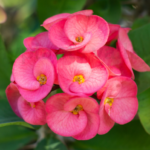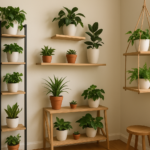Gardening gloves are indispensable companions for anyone with a green thumb, shielding hands from thorns, soil, and moisture. Yet, with each gardening session, these faithful protectors accumulate dirt, grime, and sweat, potentially becoming breeding grounds for bacteria and fungi.
Properly cleaning gardening gloves is essential for maintaining good hand hygiene and ensuring their longevity and effectiveness. This guide delves into the art of washing gardening gloves, providing step-by-step instructions and valuable tips to keep your gloves clean, comfortable, and ready for your next gardening endeavour.
From selecting suitable cleaning materials to understanding the importance of regular maintenance, we’ll equip you with the knowledge and techniques to tackle even the toughest stains and odours. So, let’s roll up our sleeves and dive into glove cleaning, ensuring that your hands stay protected and your gardening experience remains enjoyable.
Why need Gardening Gloves?

Gardening gloves serve multiple essential purposes for both novice and experienced gardeners alike. Firstly, they protect your hands against various hazards in the garden, such as thorns, sharp objects, and abrasive surfaces. By wearing gloves, you can prevent cuts, scratches, and punctures, ensuring the safety and well-being of your hands.When making potting soil, remember to wear your gardening gloves to protect your hands from dirt and potential irritants.
Secondly, gardening gloves help maintain cleanliness. They act as a barrier between your skin and the dirt, mud, and chemicals commonly encountered during gardening tasks. This keeps your hands clean and minimizes the risk of skin irritation, allergic reactions, and exposure to harmful substances.
Moreover, gardening gloves offer comfort and grip, allowing you to work more efficiently and effectively in the garden. With the right pair of gloves, you can comfortably handle tools, pull weeds, and perform various tasks without discomfort or slippage.
Read our post to pick your :5 Best women’s gardening gloves in 2024
Why Washing Gardening Gloves is Important?

Washing gardening gloves is essential for several reasons:
Hygiene: Regularly washing gardening gloves helps remove dirt, sweat, and other residues that can harbour bacteria and fungi. This helps maintain good hand hygiene and reduces the risk of skin infections or irritations.
Odour Control: Over time, gardening gloves can develop unpleasant odours due to accumulated dirt and sweat. Washing them effectively eliminates these odours, ensuring your gloves remain fresh and pleasant.
Prolonged Lifespan: Proper cleaning can extend the lifespan of gardening gloves by preventing the buildup of dirt and grime that can weaken the fabric or leather. By keeping them clean, you can get more use out of your gloves and save money in the long run.
Comfort: Clean gloves are more comfortable, allowing for better dexterity and grip while working in the garden. Removing dirt and debris also prevents abrasions or discomfort caused by gritty residues rubbing against the skin.
Appearance: Washing gardening gloves restore their appearance, making them look cleaner and more presentable. This is especially important if you use your gloves for tasks where cleanliness is essential, such as handling food crops or working in flower arrangements.
How often should I wash my gardening gloves?
It’s recommended to wash your gardening gloves after each use to maintain optimal hygiene and prolong their lifespan. Regular washing helps remove dirt, sweat, and other residues that can accumulate during gardening. By cleaning your gloves after every use, you prevent the buildup of bacteria and fungi, reducing the risk of skin infections or irritations.
Additionally, washing your gloves regularly helps eliminate unpleasant odours and keeps them clean and presentable. Overall, incorporating glove washing into your gardening routine ensures that your hands stay protected and your gloves remain in good condition for extended periods.
Materials Required for Washing Gardening Gloves

- Soap or Detergent
- Water
- Soft Bristled Brush
- Optional: Vinegar or Baking Soda
To effectively wash gardening gloves, you’ll need several materials to ensure a thorough cleaning process. Here’s a detailed overview:
Soap or Detergent: Choose a mild soap or detergent that is gentle on the fabric or material of your gardening gloves. Avoid harsh chemicals that may cause damage or irritation to your skin. The soap or detergent will help to loosen dirt, stains, and odours from the gloves.
Water: Use lukewarm water to wash your gardening gloves. Fill a basin or sink with enough water to submerge the gloves completely. The water will help rinse dirt and soap residue, leaving your gloves clean and fresh.
Soft Bristled Brush: A soft-bristled brush, such as a toothbrush or a nail brush, is essential for gently scrubbing stubborn stains and dirt from the surface of your gloves. The soft bristles ensure that you can effectively clean your gloves without damaging the material.
Optional: Vinegar or Baking Soda: For stubborn stains or persistent odors, you can add vinegar or baking soda to your cleaning solution. Vinegar is known for its natural cleaning properties and can help break down stains and neutralize odors. Baking soda, on the other hand, is abrasive and can effectively scrub away dirt and grime.
How to Wash Gardening Gloves Step-by-Step Guide
Here’s a step-by-step guide on how to wash gardening gloves:

Step 1: Prepare the Cleaning Solution
- Fill a basin or sink with lukewarm water.
- Add a small amount of mild soap or detergent to the water.
- Optional: To remove stubborn stains or odours, add a splash of vinegar or a sprinkle of baking soda to the cleaning solution.
Step 2: Soak the Gloves
- Place the gardening gloves into the cleaning solution, ensuring that they are fully submerged.
- Allow the gloves to soak for about 10-15 minutes. This will help loosen dirt and grime, making removing it easier.
Step 3: Scrub Gently
- Using a soft-bristled brush, such as a toothbrush or nail brush, gently scrub the gloves to remove any remaining dirt or stains.
- Pay particular attention to areas with stubborn stains, such as the fingertips and palms.
- Avoid using excessive force or harsh scrubbing, as this may damage the fabric or material of the gloves.
Step 4: Rinse Thoroughly
- Once the gloves are clean, rinse them thoroughly with clean water to remove any soap residue.
- Ensure that all soap is washed away to prevent skin irritation.
Step 5: Air Dry
- After rinsing, gently squeeze out any excess water from the gloves.
- Allow the gloves to air dry thoroughly in a well-ventilated area away from direct sunlight.
- Avoid wringing or twisting the gloves, as this may cause them to lose their shape.
A common mistake to avoid
When washing gardening gloves, it’s essential to avoid common mistakes to ensure effective cleaning and prolong the lifespan of your gloves. Here are some mistakes to avoid:
Using Harsh Chemicals: Avoid using harsh chemicals or bleach when washing your gardening gloves, as they can damage the fabric or material and cause irritation to your skin.
Skipping Soaking Time: Take the soaking step. Allowing the gloves to soak in the cleaning solution helps to loosen dirt and grime, making it easier to remove during scrubbing.
Over-Scrubbing: While scrubbing is necessary to remove dirt and stains, avoid overdoing it. Too much scrubbing with a rough brush can damage the fabric or material of the gloves, leading to premature wear and tear.
Not Rinsing Thoroughly: Ensure you rinse your gloves thoroughly after washing to remove any soap residue. Soap residue on the gloves can cause skin irritation and attract more dirt and grime.
Using Hot Water: Avoid using hot water to wash your gloves, as it can cause shrinkage or damage to certain materials. Stick to lukewarm water for washing.
Skipping Drying Time: Allow your gloves to air dry completely before using them again. Avoid using heat sources like dryers, as they can also cause damage to the fabric or material.
How to Maintain Gardening Gloves Regular?
Here are some tips for maintaining your gardening gloves:
Regular Cleaning
- Make it a habit to clean your gardening gloves after each use to prevent the buildup of dirt, sweat, and bacteria.
- Regular cleaning helps prolong the lifespan of your gloves and ensures they remain hygienic for your hands.
Storage
- Store your gardening gloves in a dry, well-ventilated area when not in use.
- Avoid leaving them exposed to direct sunlight or moisture, as this can cause them to deteriorate faster.
- Consider hanging your gloves or storing them in a clean, dry container to maintain their shape and free them from dust and debris.
Conclusion
In conclusion, maintaining clean and well-cared-for gloves is essential for both the longevity of the gloves and the health of your hands. By following a regular cleaning routine and proper storage practices, you can ensure that your gloves remain hygienic, comfortable, and practical for all your gardening tasks. Remember to avoid harsh chemicals during cleaning and allow your gloves to air dry thoroughly after washing. By doing so, you’ll not only extend the lifespan of your gloves but also minimize the risk of skin irritation or infection. Investing time and effort into caring for your gloves will ultimately pay off in enhanced comfort, protection, and durability.
FAQs
How often should I wash my gardening gloves?
It’s recommended to wash your gloves after each use to maintain optimal hygiene and prolong their lifespan.
Can I machine wash my gloves?
While some gloves may be machine washable, it’s best to check the manufacturer’s instructions to avoid damaging the fabric.
What should I do if my gloves develop a strong odor?
To remove stubborn odors, soak your gloves in a mixture of water and vinegar or baking soda before washing them as usual.
Can I use bleach to clean my gardening gloves?
It’s not advisable to use bleach or harsh chemicals, as they can damage the fabric and reduce the lifespan of your gloves.
How should I store my gardening gloves when not in use?
Store your gloves in a dry, well-ventilated area away from direct sunlight to prevent mould and mildew.







